The Enermax LiqMaxFlo 360mm AIO Cooler Review: A Bit Bigger, A Bit Better
by E. Fylladitakis on February 14, 2024 8:00 AM EST- Posted in
- Cases/Cooling/PSUs
- Water Cooling
- Enermax
- Liquid Cooling
- RGB
- ARGB
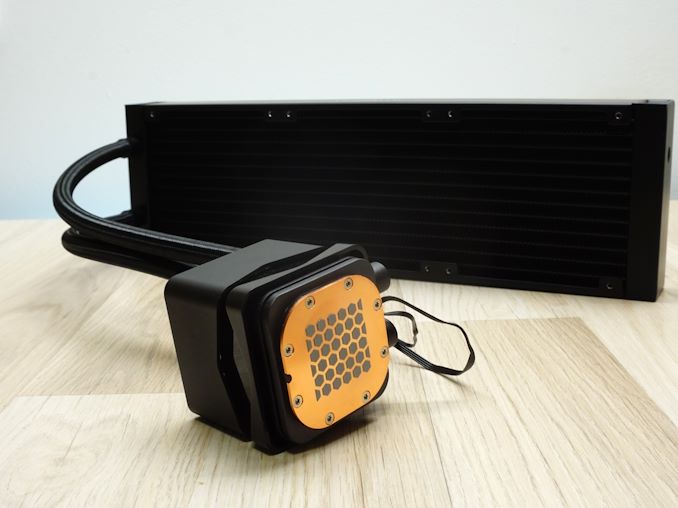
For established PC peripheral vendors, the biggest challenge in participating in the highly commoditized market is setting themselves apart from their numerous competitors. As designs for coolers and other peripherals have converged over the years into a handful of basic, highly-optimized designs, developing novel hardware for what is essentially a "solved" physics problem becomes harder and harder. So often then, we see vendors focus on adding non-core features to their hardware, such as RGB lighting and other aesthetics. But every now and then, we see a vendor go a little farther off of the beaten path with the physical design of their coolers.
Underscoring this point – and the subject of today's review – is Enermax's latest all-in-one (AIO) CPU cooler, the LiqMaxFlo 360mm. Designed to compete in the top-tier segment of the cooling market, Enermax has opted to play with the physics of their 360mm cooler a bit by making it 38mm thick, about 40% thicker than the industry average of 27mm. And while Enermax is hardly the first vendor to release a thick AIO cooler, they are in much more limited company here due to the design and compatibility trade-offs that come with using a thicker cooler – trade-offs that most other vendors opt to avoid.
The net result is that the LiqMaxFlo 360mm gets to immediately start off as differentiated from so many of the other 360mm coolers on the market, employing a design that can give Enermax an edge in cooling performance, at least so long as the cooler fits in a system. Otherwise, not resting on just building a bigger cooler, Enermax has also equipped the LiqMaxFlo 360mm with customizable RGB lighting, allowing it to also cater to the aesthetic preferences of modern advanced PC builders. All together, there's a little something for everyone with the LiqMaxFlo 360mm – and a lot of radiator to cram into a case. So let's get started.
| Enermax LiqMaxFlo 360mm AIO CPU Cooler Specifications | |||
| Type | All-in-One Liquid Cooler | ||
| Dimensions | 397 x 120 x 63 (radiator with fan) 54 x 54 (coldplate) |
||
| Fans | 3 x 120 mm UCSFARGB12P-LMF FDB Bearing Fans 1800 RPM (max) |
||
| RGB | Yes (ARGB) | ||
| Supported Sockets | Intel: LGA1700 / LGA1200 / LGA115x / 2066 / 2011 / 1366 AMD: AM5 / AM4 |
||
| Warranty | 5 Years | ||
| Price | $128 | ||
Packaging & Bundle
Enermax packages the LiqMaxFlo 360mm AIO CPU cooler in a striking red and black box, its dimensions indicative of the cooler's size. The front of the box features a picture of the LiqMaxFlo, showcasing its design and highlighting the presence of RGB lighting. Inside, the cooler is securely nestled within tailor-made cardboard inserts, meticulously designed to safeguard the cooler during shipping and handling, ensuring it arrives in pristine condition.
Enermax ensures that the LiqMaxFlo 360mm AIO CPU cooler is not only ready to use out of the box but also equipped for long-term maintenance. The package includes a 100ml bottle of cooling liquid, a syringe with thermal compound, and a PSU jump-starting plug, in addition to the essential mounting hardware. The cooler can be installed on most modern CPU sockets, excluding Threadripper processors.
The Enermax LiqMaxFlo 360mm AIO Liquid Cooler
Upon initial inspection, the Enermax LiqMaxFlo 360mm AIO CPU cooler exhibits a design that is consistent with the conventional layout of most 360 mm AIO coolers available in the market. This cooler adheres to the standard AIO configuration, comprising a single radiator, two hoses, and a unified block. The block integrates a copper CPU contact plate with a compact liquid pump, a typical setup in modern AIO liquid cooling solutions. Enermax is using typical rubber hoses with nylon sleeving over them for additional protection, which are functional but not very flexible.
As noted in the intro of this article, the highlight of the LiqMaxFlo 360mm AIO is its above-average 38mm thick radiator. Coupled with its 25mm thick fans (which unlike the radiator, are industry-standard sized), the complete radiator/fan assembly requires a total clearance of more than 63mm (~2.5 inches) within a PC case. This is not an outrageous size by any means, but it is notable since there are plenty of cases that are designed to take AIO coolers and assume a standard 52mm rad/fan thickness. So Enermax is sacrificing a degree of case compatibility here in order to use a thicker radiator – something prospective buyers will want to be sure to double-check before making any hardware purchases.
The design of the radiator follows the common dual pass cross-flow configuration, with small fins attached to thin, elongated tubes. A notable design element of the LiqMaxFlo cooler is the prominent chrome series logo on the sides of the radiator, adding a distinct visual touch that stands out, especially when installed inside a PC case. There also is a tap at the bottom of the radiator, allowing the refilling of cooling liquid should that prove necessary. The position of the tap necessitates the removal of the entire cooler from the system prior to such maintenance.
The main block of the Enermax LiqMaxFlo 360mm AIO cooler is thoughtfully designed with customization in mind. It is mostly made out of plastic, with a top cover that is removable and replaceable. This unique feature offers considerable customization possibilities, making it particularly appealing to 3D printer owners who can create their own designs. The block is equipped with 90° fittings on its side to accommodate both hoses, and two cables emerge from this area: a 4-pin power cable and another for the RGB lighting. The RGB lighting can be connected either to the included controller or to any compatible RGB controller, providing flexibility in lighting setup and customization.
The main block also has a small cooling fan attached to it, but it's not for the cooling of the CPU (or the block) itself. Rather, it's for providing airflow to keep down the temperature of power components adjacent to the CPU socket. Inside the block lies a unique pump and channel design by Enermax, who claims it offers significantly higher liquid pressure than other designs.
At the bottom of the main block assembly, we can see a squircle contact plate that is attached to the plastic base cover with eight screws. Its surface is not polished down to a mirror finish but is adequately smooth and flat. A quality thermal compound (Dow Corning TC-5888) is already pre-applied to the base – the bundled thermal compound syringe is for future use only and should not be used when first installing the cooler. The contact plate is just large enough for socket LGA-1700 and AM5 processors.
Enermax provides three of their own UCSFARGB12P-LMF 120 mm with the LiqMaxFlo 360mm AIO cooler. These are high pressure fan designs, with just five wide blades per fan, a solid choice from an engineering point of view considering the thick radiator. They have an operational range of 500 to 1800 RPM, which is very good for 120 mm fans and should allow the LiqMaxFlo to have a wide operational range. The fan cables are very short, allowing multiple fans to be connected in parallel (daisy-chain) with only one extension wire providing power to the array. Enermax combined the RGB and power wiring into one, resulting to a single 8-pin connector per fan and, thus, less cable clutter.
Enermax did not try to reinvent the wheel when it comes to the RGB lighting, going for the classic semi-transparent fan hub design with the LEDs installed inside the hub. This includes the small 60 mm fan inside the CPU block. The lighting is fairly bright and adequately even, with the brightness diminishing towards the edge of the fans. Lowering the brightness reveals lighting gaps to the naked eye, as the hub’s radius is too small and the installed LEDs too few to conceal that effect. It is not an outstanding implementation by today’s standards yet we consider it passable for the greatest percentage of users, excluding those that are particularly picky regarding the aesthetic appearance of their systems.


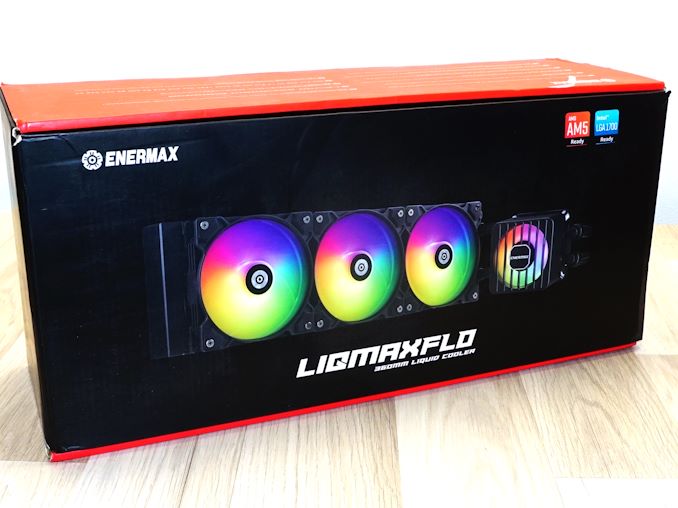
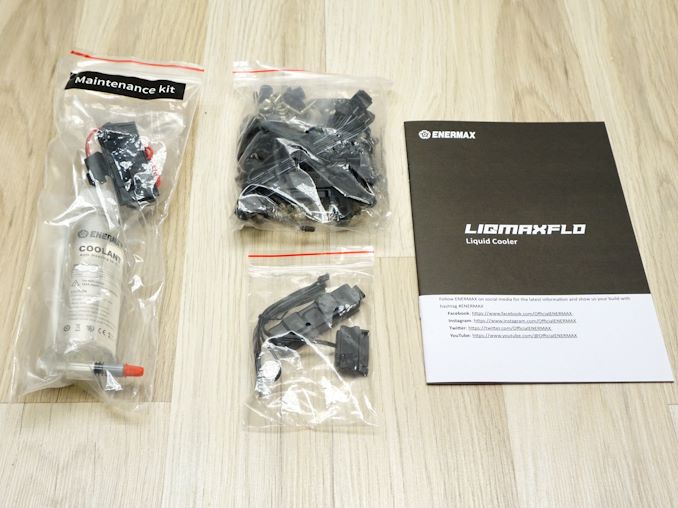
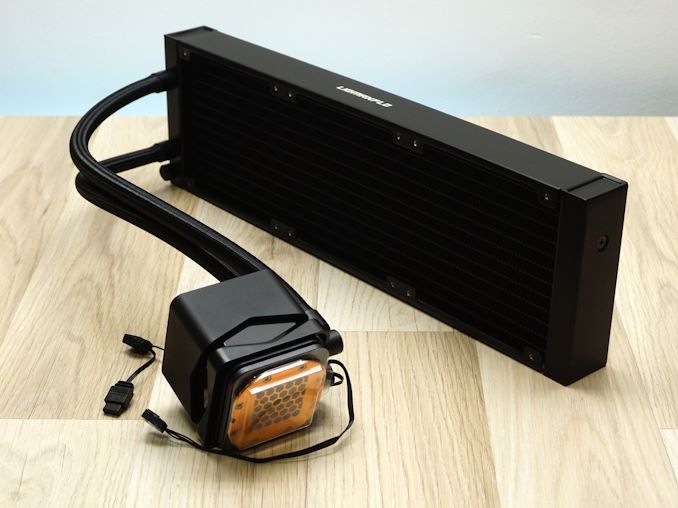

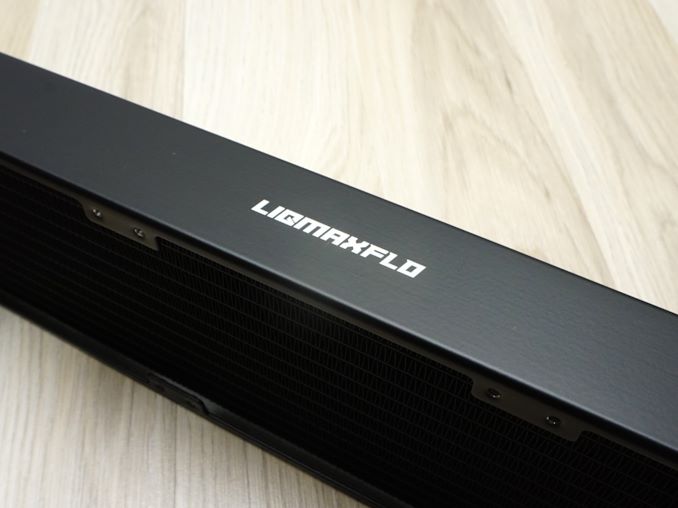

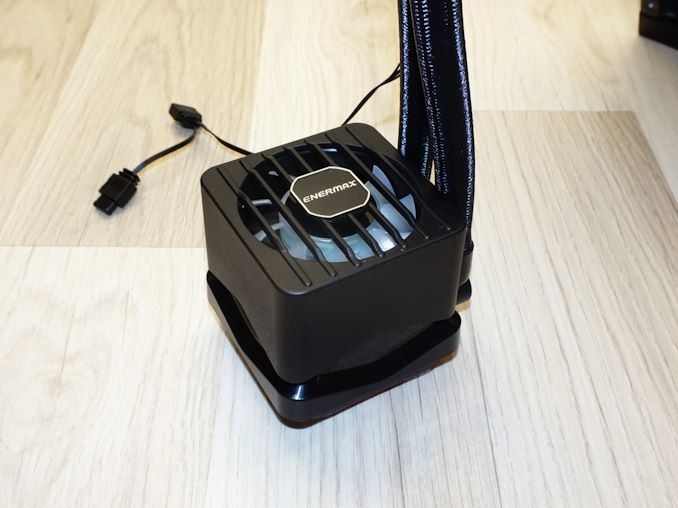
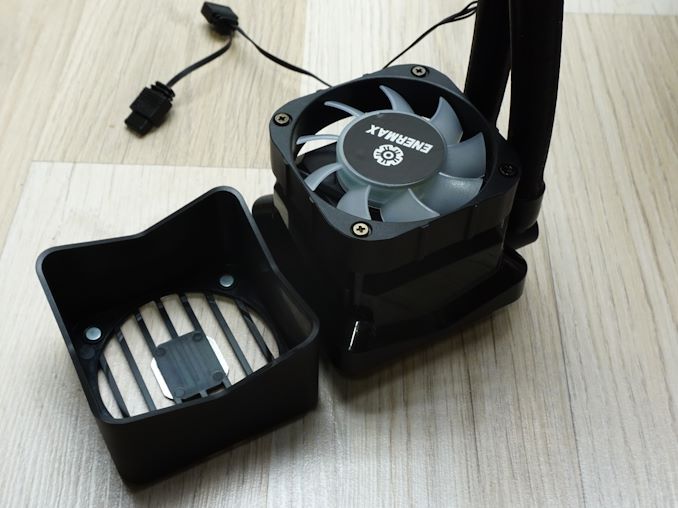
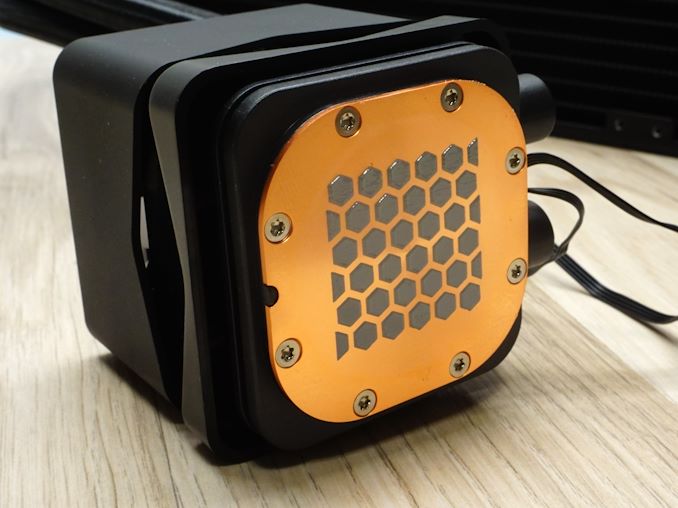
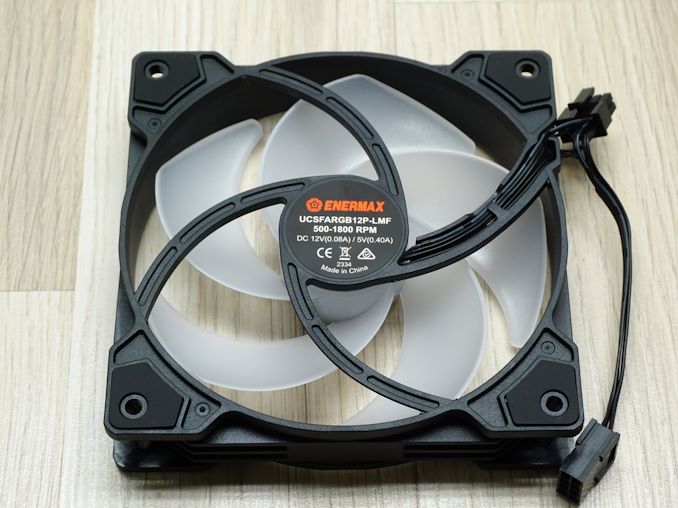
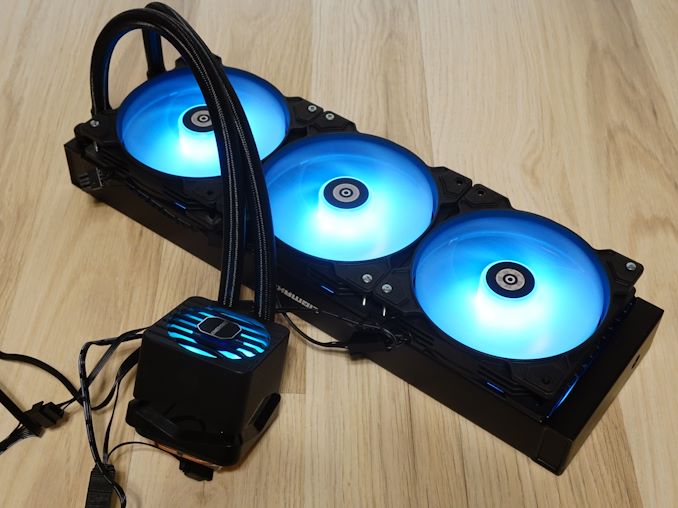
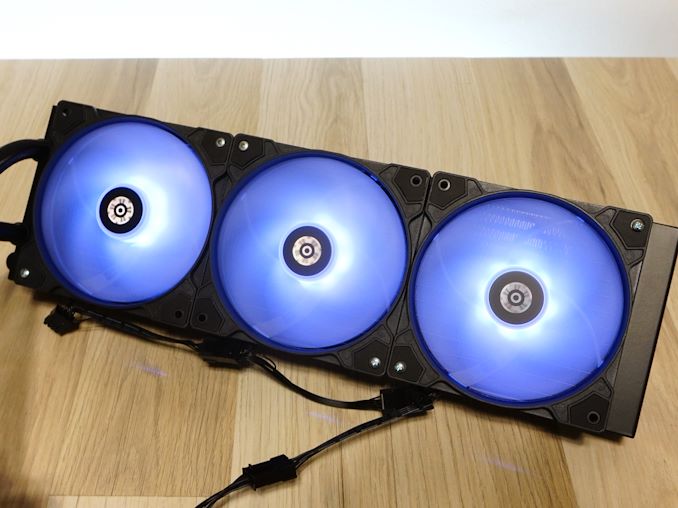
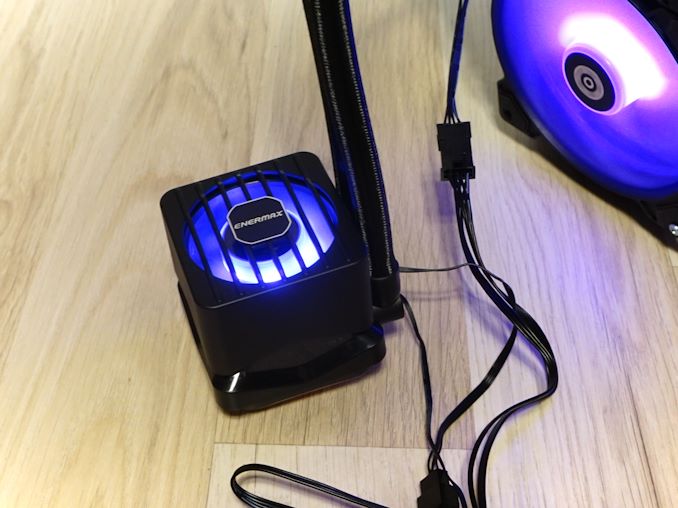








12 Comments
View All Comments
meacupla - Wednesday, February 14, 2024 - link
Does the 60mm fan on the CPU block change speed at all? Is it tied to the pump speed, is it fixed, or does it have its own power connector? Replyincx - Wednesday, February 14, 2024 - link
After the bs they pulled with Liqtech TR4 coolers (see GamersNexus etc for coverage) I wouldn't trust that company with my dirty socks. Had two of them fail in a row each within a year, after which I switched back to air with a Noctua and blacklisted Enermax for life. Replyballsystemlord - Wednesday, February 14, 2024 - link
Their story is rather sad considering how good they are at making fans. ReplyMartenKL - Thursday, February 15, 2024 - link
Strange that the Arctic Liquid Freezer II is represented by the 240 model and not the comparable 360-model. ReplyPeachNCream - Thursday, February 15, 2024 - link
Anandtech - The internet's number one site for reviews of manufacturers' desktop PC coolers and the occasional USB storage solution! Replyback2future - Thursday, February 15, 2024 - link
[ Yes, and there's more interest in AMD Zen 6, 2.5d Interconnects, ~3-2nm(?), also'https://www.anandtech.com/show/21242/amd-ryzen-7-8... ' ] Reply
SanX - Friday, February 16, 2024 - link
Why waste more and more energy for nothing? Now almost a kW, soon will be two. Let they heat water in the tank. ReplyPeachNCream - Saturday, February 17, 2024 - link
I don't think home computers will ever require 2kW. Most household electrical wiring would not support that sort of demand which is fortunate since gaming PCs are already wastefully stupid enough. ReplySanX - Sunday, February 18, 2024 - link
Most homes have laundry and air conditioners and that's 240V. Now you can put your PC into attic or basement, fiber optic HDMI at 8k costs almost nothing ReplyPeachNCream - Sunday, February 18, 2024 - link
While there might be a very limited number of people willing to run a dedicated 240V line somewhere and then run fiber to another location in their home, that won't do much for people that live in apartments or rental properties. Also attics tend to be quite hot in the summer so a PC located there will likely require additional cooling if the attic doesn't already have it. There is not a sufficiently large potential market with the vast majority of computing shifting to phones or other portable hardware already reducing the appeal of mainstream desktops let alone a hypothetical 2kW system that is, to be quite frank, just a games machine. Reply